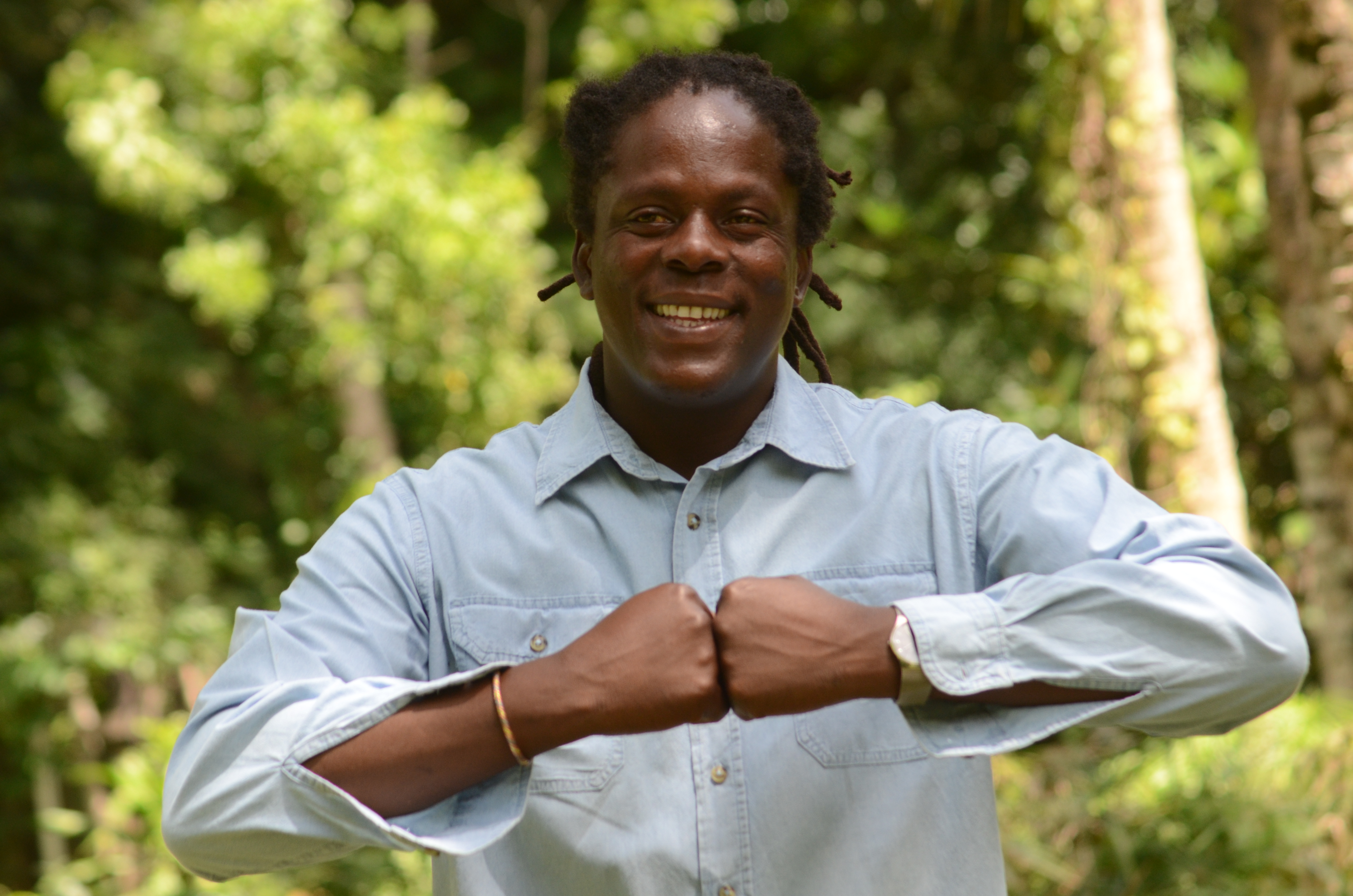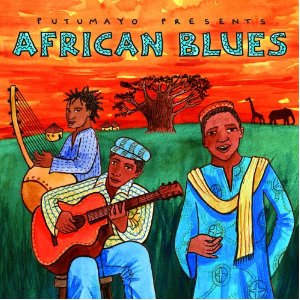
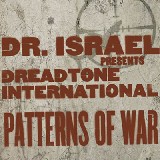 Dr. Israel Presents Dreadtone International: Patterns of War, ROIR, 2005
Dr. Israel Presents Dreadtone International: Patterns of War, ROIR, 2005
Rating: A
Dr. Israel again. Remember his first? Inna City Pressure? Astonishing musical vision. This is follow-up. Patterns of War. Almost as good.
Track number one. Simple piano riff. Forceful, clipped singing. Repetitive melody line. Skankin good rhythm. Textured electronic trickery. Bass like molasses. (Thick, dark, rich.) Lyrics about escape.
The second track. Potent African feel. But definitely reggae. Highly political lyrics.
Next track (three). Deep, slow rhythm. Wandering and furtive. Dub influences abound. Singing very soulful. Im left behind. Drone creates tension. Slowly ebbs away.
Track four now. Quicker and lighter. Dramatically contrasting voices. Rhythmic, catchy chant. Not much tune. Great feel though. Singer wants Sensemilla.
On to five. Slow, sticky one-drop. Spooky, oppressive, paranoid. Strange electronic textures. Dispassionate, disembodied vocal. Yet very involving.
Track numero six. Up for air. Graceful female voice. Emphatic piano chords. Busy, nimble percussion. Nice, refreshing feel.
Were at seven. Slow, minimal percussion. Frugal, dubful reggae. Sufferer vocal mannerisms. Dread Inna Babylon.
Now at eight. Shifting singing styles. Ululating at first. Then kinda bouncy. Finally almost normal. Ground keeps moving. Works really well.
Nine is next. Patterns of war. Leisurely, deliberate chant. Then it changes. Breathless dancehall chatter. Violence beget destruction. Turns into dub. Repeated keyboard phrases. Repeated vocal phrases.
Ten, eleven, twelve. Dub, dub, dub. Echoing vocal snatches. Neat electronic effects. Beeps and whooshes. Still seeking answers.
End of album.
Patterns of War. Highly imaginative music. Unique and wonderful. Go get it.
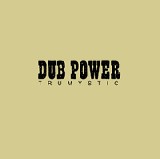 Trumystic: Dub Power, tmg Records, 2 CDs, 2005
Trumystic: Dub Power, tmg Records, 2 CDs, 2005
Rating: A
I wasnt impressed at all with Stand Up, a Trumystic EP that came my way last year. It had four different mixes of a pop-dance hit single, and it did nothing for me. Zip.
That was last year. This is this year, and Dub Power, a Trumystic double CD set (only half of which is really dub, despite the title), has come my way. To say that its creativity and artistry impress me is an understatement; it does practically everything for me thats worth doing but brush my teeth and take the dog for a walk. It amuses, enthralls, challenges. Its foreground music and background music. It moves my body and entertains my mind. I even love the unassuming cover design, the opposite of its forerunners gaudiness.
I like it from the snorting, growling beginning of the piano-pounding instrumental first track of Disk 1. Further inside, I like the strong-willed female vocal enchanting us with a melody line so inspired it seems inevitable, and with lyrics so uncommon they require attention (must have been the fear that incited them). In fact I like the power-pop vocal approach generally, the firm grooves, and especially the convincing, gorgeous seventh track with its supple lead vocal that gracefully shifts from a Sanctus, Sanctus religious chant to a Babylon chant dem down reggae chant. I am in awe.
I like the musical allusions to classic reggae tunes and the lyrical allusion to the Book of Ecclesiastes (a time to fight, a time to heal). The bouncy Bo Diddley/reggae blend in Foxy is immensely likeable too. And of course I like the whole second disk with its dubs of most of the first, starting with the angular, disjointed rhythm of High Times.
Thats a lot of likes. What dont I like? Nothing. Zip. (Except the Mad Professor mix of the aforementioned Stand Up single and even that is tolerable in the inventive context of the whole album.) This is original, contemporary reggae that pushes at the edges of its genre. Like it? I love it.
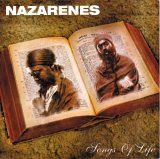 Nazarenes: Songs of Life, Heartbeat, 2004
Nazarenes: Songs of Life, Heartbeat, 2004
Rating: A-
First impression: Armed only with the knowledge that Nazarenes denotes a couple of brothers from Ethiopia who play reggae, I popped Songs of Life excitedly onto my CD player. I dont know what I expected, but whatever it was, it didnt quite correspond with what I heard. What I heard seemed not that much different in lyrics or music from what I had heard countless times before, from Jamaican artists. But it was okay.
Second impression: Armed with the knowledge that it wasnt all that different, I popped this disk a second time onto my CD player. I realized it was good reggae. Quite good, in fact.
Third impression: Armed with the knowledge that this was quite good reggae, I gave it another go. Wow. I started hearing the beautiful, haunting harmonies and the soulful vocals. I realized I was being drawn into each song by inventive intros and kept interested by sparkling arrangements. Some of my all-time favorite reggae artists came pleasantly into mind here and there: the urgency and the bible story themes of The Twinkle Brothers, for example, and the long, careful phrasing of Ijahman Levi. The tracks had suddenly become highly individualized, signaling that each song was unique and coherent in itself. I was flabbergasted. How had I missed all this before?
I had missed it all, of course, because my original expectations of Nazarenes were both vague and unrealistic. Did I expect total uniqueness in the music? Or special insight in the lyrics? Why should I? Just because they are from the homeland of homelands in Africa?
Once I let go of what isnt there, I could appreciate what is there. That includes some fearsome rhythms, a smidgeon of dub, a pretty country and western song, nice falsetto harmonies and instrumentation that ranges from strummed guitar to chugging guitar to jazzy brass licks to gentle flute to crackling percussion to orchestral bits. And above all, songs that are well written and well delivered.
Final and lasting impression: Songs of Life is wonderfully satisfying reggae. Listen carefully, skank heartily.
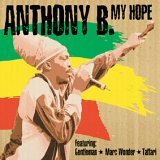 Anthony B.: My Hope, Minor7Flat5, 2005
Anthony B.: My Hope, Minor7Flat5, 2005
Rating: A-
Anthony B. has one of those pushy, insistent, pompous voices that loves the dancehall. Thats fine; Im not complaining. But the truly fine thing about My Hope is that his vocal texture and technique fit so beautifully with the harmony voices in the back. Or is it vice versa? Anyway, the arrangements and its much the same approach throughout are centered on this potent juxtaposition. Of course theres guitar, horns, drums and bass as well, but the vocals are the real treat.
The lyrics convey the usual narrow assortment of topics: In the first track the singer is very insistent that my hope is in you. In the second he lists various countries, religions and races in his entreaty for global awareness. Then he asks Mr. Officer to stop harassing him, pleading for good sensemilla. He gets help from Mark Wonder on the pretty and engaging Dont Cry for a double dose of reassurance to the female love object.
The album is starting to gel now. In the powerful Strong Shoulder, Anthony B. praises his womans strength and devotion. The thumping, resolute percussion of Jah Alone, aided by its call and response structure, builds momentum until the abrupt end; its a goodie. But even that is surpassed by the adventurous and captivating Dancehall Thing, which combines quick dancehall rhythm and vocal with a sprightly classical motif. Watch Over My Head gives the background singers a bigger role than ever, coming in for the whole of each memorable chorus. The fine Girl Look Fine has the only truly solo performance here, while Gentleman guests on Face Off for a catchy chatter/singer combo. Rise Up is another winner, adding Taffaris slightly cramped but effective vocal style to the mix. Crown I starts with minimal arrangements, then expands into the fuller sound typical of this disk. A vamping piano drives the final tune through its social commentary about how she is in love with a dreadlocks but her momma disapproves.
Which reminds me; I had started to comment on the lyrics but got sidetracked. Ah well, thats the danger when the subject matter is so predictable. You too will forget what Anthony B. and his guests are actually saying on this one, but you will remember it for the great vocal work and impressive musical hooks.
Ska Cubano: Ay Caramba!, Casino Sounds, 2005
Rating: A-
Ay Caramba! is a worthy follow-up to Ska Cubanos first album and is much like it: big and brassy, so confident its impetuous, so brash its almost belligerent. Its tuneful, wild and adventurous, proudly retro and mostly fast. Look at me, it hollers, careering playfully down the crowded skaway, mixing genres as it goes.
The arrangements make the most of the obviously joyful mass of humanity that gathered together as musicians for these recording sessions. Yes, theres quite a bunch of people here but they all seem to find their own individual, enthusiastic spots in the mix. In other words, its a crowd, but not a horde.
As for the tunes, the track selection is close to inspired. A smattering of melodic originals fit perfectly with the rest, which arise (as on album one) from sources both obscure and not quite so. With authority and humor, the liner notes explain them all: this one from Tin Pay Alley, that one from a 1941 movie, the next from 1950s Cuba. An old reggae favorite is in here too, more or less: Sammy Dead comes back to life (appropriately enough) here as Natty No Dead.
I describe the track selection as close to inspired, because Big Bamboo really sticks out (wink wink, nudge nudge) as a pretty lame choice. Maybe its a popular choice at their concerts I can just imagine someone hollering Play Big Bamboo! (probably the same dunce who yelled at the Gypsy Kings, Hey, do Volare.) So the arrangement was likely already down pat with the song ending up on the album almost by default. In comparison, Chispa Tren is an off-the-wall and absolutely superb choice; its a jolly 1920s choo choo train cartoon theme, to quote the liner notes. In contrast to Bamboo, the world needed this one.
On balance, I have to consider Ay Caramba! another scintillating, joyful success. On top of which, it has one of the dirtiest wickedest trombones since Kid Ory. Thanks, guys.
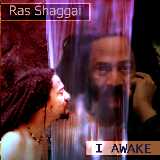 Ras Shaggai: I Awake, Conscious Vision Records
Ras Shaggai: I Awake, Conscious Vision Records
Rating: B+
Ras Shaggai is definitely awake. He is thoughtful and responsive. He may not quite have focused yet, but he is awake. And in his wakefulness he has created a diverse collection of excellent reggae songs.
Sounds of water and birdsongs introduce I Awake, evoking the beauty and purity of nature. Breaking into an upbeat rhythm and melody, the lead track becomes a statement of purpose, a sample of the vibrant music and optimistic lyrics to come. Live positive because theres too much anger in the world, the singer pleads.
Ras Shaggais straightforward lyrics continue into the title song, clearly enunciated as though he really wants us to understand and share his enthusiasm. Its tune and arrangement are framed to give him plenty of time to express himself: I give greetings unto the rising sun/ For it signifies that another days begun/The sun teaches an important lesson That track is followed by a gorgeous ballad that has Chevelle Franklins soulful vocals sharing the spotlight.
And so it continues. Sweet, mostly memorable melodies. Intelligent (if often nave) lyrics. Expert musicianship. Arrangements that are sensitive and relaxed where appropriate, urgent and up-tempo when the song requires. If theres a weak point conceptually, its in the hodge-podge feel; if theres a weak point musically, its the song praising reggae, which like most other songs about reggae is pleasant, well-meaning, innocuous and forgettable.
But there are many high points. Respect may be the albums tour de force with a simple but strong melody line, uncompromising lyrics and some of reggaes star instrumentalists on board. Theres a lovely slow, humble hymn to Jah Rastafari that uses orchestral backing and perfectly attuned hand drumming. Juxtaposed to that is the bouncing groove of Pressure Cooker, featuring gruff toast and horns. The sociopolitical diatribe Double Standard has powerful lyrics and vocals carried along by a stinging electric guitar. Then theres Raw Riddim, which is an accurate description of itself. The most moving track, though, may be the album closer, the second of two unlisted add-ons; its a heartfelt acoustic remake of When the Children Cry with hand drums, strummed guitar and piano backing.
So the album ends with an evocation of innocence and purity, a reminder of how it started. Along the way lie songs of beauty and warmth, of energy, excitement and challenge. Although somewhat unfocused, I Awake is a truly accomplished first album by a truly talented artist.
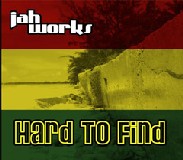 Jah Works: Hard to Find, Riddim House Productions, 2005
Jah Works: Hard to Find, Riddim House Productions, 2005
Rating: B+
Jah Works last album, the live one, was okay, but it was at a disadvantage. It was a live album.
But Hard to Find is much more than okay, in fact its downright good. Not being a live album helps, but even more significant are the vivid vocals, pulsating arrangements, strong rhythms and appealing tunes.
The disk starts on a high with the effervescent and very catchy Moses, a plea for a new leader who can lead us all to the promised land, because truly thats who we need right now. Following is another winner, Guide and Protect, which made me wonder if Steely Dan had suddenly started doing reggae; its a sophisticated sound with strings and horns, the full arrangement. After that is the up-tempo, bubbling False Kings with a wonderfully childlike, singsong melody.
Jamaica expresses a realistic appreciation for Jamaicas true beauty. Struggle features deejay-style chanting, and Whatcha Gonna Do offers a touch of UB40. The title track has a kinda lonesome horn solo in the left speaker as the singer pleads with his girl. Long Journey includes the great line, Its a long long journey, Mr. Topsy-Turvy, don’tcha loose your grip and gets dubbish late in the song. Let It Go is a refreshingly candid, non-emotive treatment of a love affair, while Dub Steady spends four and a half minutes doing as the title suggests, then brings the album to an end in an electronic crescendo.
So I like the way that Hard to Find begins, the way it progresses, and the way it ends. Theres no pandering to the crowd, no distracting entreaties to sing along or wave a hand in the air, no distracting cheering from the audience. The only applause is the silent kind, the sound of appreciation in the mind of the happy, enchanted listener.
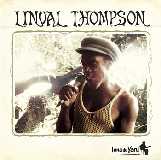 Linval Thompson: Inna De Yard, Makasound, 2005
Linval Thompson: Inna De Yard, Makasound, 2005
Rating: B
Where you want to live?/Natty dread want to live in the hills/Where the morning sun shining so bright and sweet/Where the cool cool breeze blowing
Sounds like a treat, yes? These first words to the first song on Linval Thompsons Inna De Yard describe pretty well what the album represents, what it wants to achieve and how it sounds. If you know Thompson primarily from his classic output of 30 years ago, this might come as a shock, or a treat, or both.
As the liner notes proudly proclaim, this outdoor acoustic session was recorded in Chinnas yard, Kingston 10, November 2004 by Jah Clive. This is a clear invitation for the would-be purchaser to enjoy reggae that is about as musically direct and unprocessed as it comes. Apparently this release
signals a series of similarly conceived efforts from other artists very welcome news.
Weve heard acoustic reggae before: notably Bob Marley singing and strumming to a medley of his tunes as featured on Songs of Freedom, and more recently Clinton Fearons solo performances on Mi an Mi Guitar . Various other artists have certainly also had individual unplugged tracks on the occasional album. But Thompsons music has a fuller sound than Marleys and Fearons and most of the rest, thanks to the (non-electric) band behind him.
The organic throb of nyahbinghi drumming gives the music weight and substance. The inherent dignity of the style is perfect for the meditative and spiritual songs, and it suits even the social protest songs. But its overkill on Ease Up, in which Linval rambles on and on over a basic blues riff about making love to his lady where he thinks the neighbors might hear: Ease up baby, youre holding me too tight; youre screaming out too loud. Methinks solemnity and sex dont fit well together.
What this album does balance extraordinarily well is friendliness with intensity. Meaning I find it very comfortable to listen to for a while. Then the intensity or is it the lack of dynamics? makes me want to get away for a breather. I say that not as a criticism, but as an observation, and whenever that happens I do come back to it later, eagerly. I suspect you will too: morning sun shining bright and sweet, cool breeze blowing you know you want it, even if not ALL the time.
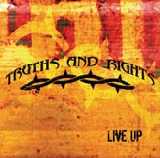 Truths and Rights: Live Up, Big Wig Productions, 2005
Truths and Rights: Live Up, Big Wig Productions, 2005
Rating: B
Toronto has been a notable dot on the reggae map since Leroy Sibbles and the late Jackie Mittoo settled there many moons ago. Truths and Rights has been a notable presence on that dot for almost as long, i.e. since the early 1980s, and the band figures prominently in the chapter on Canadian reggae in Klive Walker’s recent book Dubwise. So as you can guess, they know their stuff. They have the licks.
They also have talent. Their songwriting is generally strong, and their performances are authoritative and entertaining. But for me the primary appeal of their music or at least of their new album Live Up is not the overall professionalism on display, but the simple, much-used and very appealing modus operandi of singer-deejay combo. Again and again they use the technique, sounding fresh every time. The love song Ah You is a perfect example of how it works: the sung vocal is gentle and urgent while the chanting is positively exultant.
What else does the album offer? It has a wonderful flow. An exciting dancehall tune is balanced by a dreader, rootsier track. A gorgeous tune with pleading vocal and pensive guitar stands in contrast to the next tracks choppy rhythm and quote from The Beatles. A live track praising Jah Rastafari is delivered in a growly voice revved up to frantic level, pulsating and bombastic; but then, to bring us smoothly back down from that peak and ease us out of the album, comes a relatively old-fashioned kind of dub. The balance of all those elements keeps us interested, keeps us listening.
On the down side, some of the arrangements are of the overly safe, generic kind, reflecting the norm for contemporary reggae. The subject matter is pretty standard reggae fare too, and too often the lyrics themselves are clichd.
But the positive outweighs the negative at least two to one. Truths and Rights has given us the kind of solid, compelling, entertaining music that befits their status as stalwarts on the Toronto reggae scene. And no-one beats them in the singer/deejay game.
Joseph Israel: Gone Are The Days, Lions of Israel, 2005
Rating: C+
Theres a whole lot of reggae here a lot of very good reggae. Original melodies that stick pleasantly, musicianship that is vigorous and skilled, arrangements that are serviceable and occasionally creative, a lead singer whose voice is adequate for the job if not exactly beautiful. Chinna Smith is on hand, along with Squidley Cole and Sticky Thompson; David Madden and Dean Fraser show up here and there, as do Mikey General and Luciano briefly. Lots of talent, making pleasant sounds.
Theres also quite a pile of lyrics here. Lyrics about well, lets take a sample from each song. Track one: Thats why we say Babylon must burn. Track two: come along and chant down Babylon. Three: Judgement pon Babylon gonna be dread. Four: There will be no oppression in Jahs kingdom. Five: None of the false doctrines of Babylon could save you from this coming calamity. Six: Hotta fyah must burn, burn/And the children will learn, learn. Seven: The righteous they will never give up/Chant until Babylon erupt.
Still with me? Just checking. For all I know, right now you might be writhing in agony as you-know-what burns all around you. Assuming youre still okay, lets see what else is on Joseph Israels mind.
Eight: Babylon city shall be trampled. Nine: Lift your minds to the regions in a Zion. Ten: Jah alone wears the crown. Eleven: The tribulation that is at hand, the destruction of all nations. Twelve: Babylon your fun soon done/Babylon see the fire a burn. Thirteen: in the last days man would be caught up in careless ways.
Its called thematic unity, I guess. One of the songs is actually a love song (yes, romantic love), but the burning message got in anyway. Whew. This guy Israel has been reading the Book of Revelation, and like various other believers over the last couple of thousand years, he knows that the end is imminent. Any day now.
So, although the lyrics may be a tad single-minded, the music itself is just fine. Ill keep going back to the album once in a while for that. Until Im consumed, that is.
